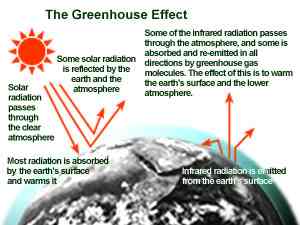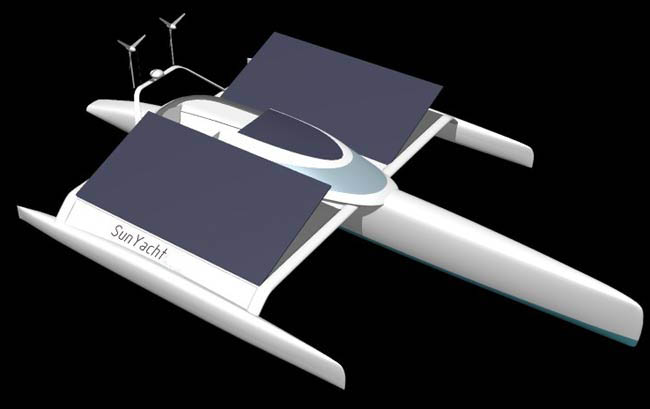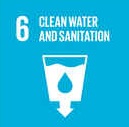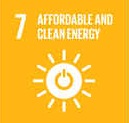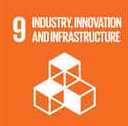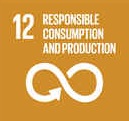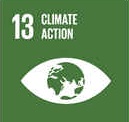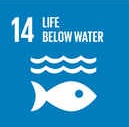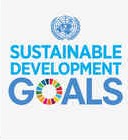|
GLOBAL WARMING
|
|
|
Agenda 21 is a blueprint for sustainable development into the 21st Century. Its basis was agreed during the Earth Summit at Rio in 1992, and signed by 179 Heads of State and Governments. Is enough being done to halt Global Warming?
An Introduction to Our Climate
According to the National Academy of Sciences, the Earth's surface temperature has risen by about 1 degree Fahrenheit in the past century, with accelerated warming during the past two decades. There is new and stronger evidence that most of the warming over the last 50 years is attributable to human activities. Human activities have altered the chemical composition of the atmosphere through the buildup of greenhouse gases – primarily carbon dioxide, methane, and nitrous oxide. The heat-trapping property of these gases is undisputed although uncertainties exist about exactly how earth's climate responds to them. Go to the Emissions section for much more on greenhouse gases.
Our Changing Atmosphere
Energy from the sun drives the earth's weather and climate, and heats the earth's surface; in turn, the earth radiates energy back into space. Atmospheric greenhouse gases (water vapor, carbon dioxide, and other gases) trap some of the outgoing energy, retaining heat somewhat like the glass panels of a greenhouse.
Climate Change
Global mean surface temperatures have increased 0.5-1.0°F since the late 19th century. The 20th century's 10 warmest years all occurred in the last 15 years of the century. Of these, 1998 was the warmest year on record. The snow cover in the Northern Hemisphere and floating ice in the Arctic Ocean have decreased. Globally, sea level has risen 4-8 inches over the past century. Worldwide precipitation over land has increased by about one percent. The frequency of extreme rainfall events has increased throughout much of the United States.
Increasing
concentrations of greenhouse gases are likely to
accelerate the rate of climate change. Scientists expect
that the average global surface temperature could rise
1-4.5°F (0.6-2.5°C) in the next fifty years, and
2.2-10°F (1.4-5.8°C) in the next century, with
significant regional variation. Evaporation will
increase as the climate warms, which will increase
average global precipitation. Soil moisture is likely to
decline in many regions, and intense rainstorms are
likely to become more frequent. Sea level is likely to
rise two feet along most of the U.S. coast.
Solar powered trimaran concept
Global Impacts
Rising global temperatures are expected to raise sea level, and change precipitation and other local climate conditions. Changing regional climate could alter forests, crop yields, and water supplies. It could also affect human health, animals, and many types of ecosystems. Deserts may expand into existing rangelands, and features of some of our National Parks may be permanently altered.
Climate | Emissions | Impacts | Actions | News and Events | Resource Center | Where You Live | Visitor Center Health | Water Resources | Polar Regions | Mountains | Forests | Rangelands | Deserts | Non-tidal Wetlands Coastal Zones | Agriculture | Fisheries | Birds | National Parks | State Impacts | International Impacts
Actions
Today, action is occurring at every level to reduce, to avoid, and to better understand the risks associated with climate change. Many cities and states across the country have prepared greenhouse gas inventories; and many are actively pursuing programs and policies that will result in greenhouse gas emission reductions.
Solar
Navigator is just one example of alternative energy in
action. The advanced hull-form trimaran
is a showcase for
sustainable technology, providing energy to keep a boat
cruising around the world, with enough in reserve to
keep a crew of up to six comfortable on the history
making voyage.
In December of 1997, the Kyoto Protocol was drafted by the Conference of the Parties (COP) to the United Nations Framework Convention on Climate Change (UNFCCC) at their third annual meeting (COP-3). Information provided by the Intergovernmental Panel on Climate Change (IPCC) set the level of global CO2 emissions reductions that are needed in order to prevent further climate change and the Kyoto Protocol served as an international ‘plan’ for how to achieve an interim target. The agreed upon emissions levels set out in the Protocol charge Annex I countries (industrialized countries) with the responsibility of reducing their emissions of greenhouse gases “by at least 5 per cent below 1990 levels in the commitment period 2008 to 2012” (Article 3 of the Kyoto Protocol).
To
enter into force, the Protocol must be ratified by 55
Parties to the UNFCCC, including Annex I Parties
representing at least 55% of the total carbon dioxide
emissions for 1990. As of June 2002, 84 Parties had
signed the Kyoto Protocol and 74 had either ratified or
acceded to the Protocol (Kyoto
Protocol status of ratification), collectively
representing a commitment to a 35.4% reduction in global
carbon dioxide emissions; 20% shy of the level required
for the Protocol to enter into force (Kyoto
Protocol thermometer). The United States signed the
Protocol on December 11, 1997 but has failed to ratify
it. The US
national commitment alone would account for a 36.1%
reduction in global carbon dioxide emissions.
In
general terms, once the details of a treaty have been
negotiated the treaty is adopted and opened up for
signatures. When
a party signs the treaty it is stating its nation’s
intent to review and seriously consider the treaty.
After review, if a government determines it is
willing to comply with all provisions under the treaty,
the treaty can be formally ratified.
Once a certain number of parties formally ratify
the treaty it enters into force and compliance with the
treaty’s articles becomes mandatory for those parties
that have ratified it.
The
Unites States has ratified the UNFCCC and therefore is
legally bound to meet with all of its requirements.
Because the U.S. has only signed, and not
ratified the Kyoto Protocol, it is not legally bound to
meet with the Protocol mandates, but as a signatory to
the Protocol the U.S. still has several obligations.
These obligations are outlined in the Vienna
Convention on the Law of Treaties a United
Nations treaty that outlines acceptable behaviors during
the various stages of multilateral treaty development
and entry (see
also CRS report to Congress on climate change).
The United States signed the Vienna Convention on
April 24, 1970, and the Convention entered into force
January 27, 1980. Over
the past couple of decades the Vienna Convention has
been widely viewed as the framework for international
law, however, it has never been ratified by the U.S.
Therefore, any perceived obligations the U.S. may
have as a signatory of the Kyoto Protocol, as described
in the Vienna Convention, could not be enforced, because
as a non-ratification party, the U.S. cannot be governed
by the Vienna Convention’s mandates.
The
bottom line: it would appear the U.S. is legally
obligated to complete the tasks required under the
UNFCCC, but at this time does not have any legal
obligations under the Kyoto Protocol.
Legal
Analysis
American
Bar Association CRS
Report for Congress -Received through the CRS Web
-Global Climate Change: Selected Legal Questions About
the Kyoto Protocol
http://www.cnie.org/nle/crsreports/climate/clim-15.pdf). Rule
of Power or Rule of Law?
An assessment of U.S. Policies and Actions
Regarding Security-Related Treaties
Documents
& web sites: Treaties
in force for the United States http://sedac.ciesin.org/prod/charlotte Treaty
Reference Guide United Nations Office of Legal Affairs United
Nations Climate Change Information Kit United
Nations Framework Convention on Climate Change (UNFCCC)
The
response to the potential threat of global warming has
differed among the nations and regions of the world.
Some countries have taken the call to reduce
anthropogenic GHG emissions very seriously, and have
implemented national emissions standards and emissions
reduction targets.
Emissions trading schemes have been established
and tested, new carbon taxes have been imposed, and
‘sustainability’ and
‘environmental externalities’ have become
factors of consideration in economic development
schemes. However,
not all nations have jumped on the bandwagon.
While 186 countries have ratified the UNFCCC,
only 74 have ratified the, arguably, more legally
binding Kyoto Protocol.
There
are several reasons for the ‘holdout’ nations’
reluctance to make an emissions reduction commitment.
One is the belief that there is not enough
scientific evidence to prove that human activities and
increased carbon dioxide emissions are in fact
responsible for rising temperatures.
Numerous scientific studies can be used to back
up claims on both sides of the argument, and it is
therefore difficult for some policy makers to justify
potentially costly actions that may or may not yield the
desired results. Beyond
simple cost is fear over the greater potential economic
impacts of forced compliance in the arena of a global
market where not all the players are being monitored.
Because developing countries do not, at this
time, have GHG emissions reduction commitments or
monitoring requirements, some believe they have a
competitive advantage for production of goods and
services that are energy and GHG intensive.
Therefore some nations, including the United
States, have declined to even consider ratification of
the Kyoto Protocol until developing countries are forced
to make commitments and the overall potential economic
impacts of Kyoto Protocol implementation can be more
thoroughly studied.
For a detailed look at what other nations have been doing to meet their UNFCCC obligations, see the collection of National Communications available at http://unfccc.int/resource/natcom/index.html.
Below find examples of what is being done outside the United States to study and combat global warming.
CANADA: Canada's
National Climate Change Process - National
Strategy/Business Plan Canada's
National Climate Change Process - Media Room
EUROPE:
OTHER: Major
Climate Change Studies undertaken in Indonesia Malaysia
and the United Nations Framework Convention on Climate
Change New
Zealand Climate Change Programme
MORE LOCAL AGENDA 21 UK PARLIAMENT A-Z HOUSE OF LORDS A-Z UK COUNCIL'S AGENDA 21
Hi
Solar,
|
|
|
This website is Copyright © 1999 & 2019 Electrick Publications. The name Solar Navigator is a trade mark of Solar Cola Ltd. All rights reserved. The Cleaner Ocean Foundation Ltd is an educational charity.
|
